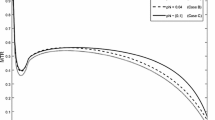Abstract.
This paper studies the role of family size in the design of optimal income taxation. We consider a second best setting where the government observes the number of children and the income of the parents but not their productivity. With a linear tax schedule the marginal tax rate is shown to decrease with the number of children, while the relationship between the demogrant and family size appears to be ambiguous. With two ability levels, optimal non-linear income tax implies zero marginal tax rates for the higher ability parents; low ability parents have positive marginal tax rates that decrease with family size.
Similar content being viewed by others
Author information
Authors and Affiliations
Additional information
Received: 4 September 2000/Accepted: 17 May 2001
Rights and permissions
About this article
Cite this article
Cremer, H., Dellis, A. & Pestieau, P. Family size and optimal income taxation. J Popul Econ 16, 37–54 (2003). https://doi.org/10.1007/s001480100113
Issue Date:
DOI: https://doi.org/10.1007/s001480100113




